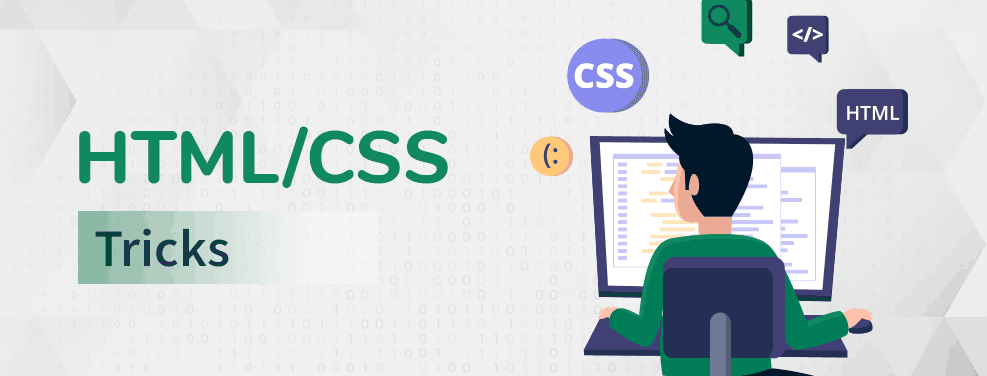
23
Top 10 CSS Tricks Every Beginner Should Know in 2025
Discover the top 10 CSS tricks every beginner should know in 2025. Enhance your web design skills with these essential tips and techniques.
In the ever-evolving world of web development, mastering CSS (Cascading Style Sheets) is crucial for creating visually appealing and responsive websites. As we step into 2025, new features and best practices have emerged, making it essential for beginners to stay updated. This guide will walk you through the top 10 CSS tricks every beginner should know, ensuring you build a solid foundation in modern web design.
1. Utilize CSS Variables for Consistency
CSS variables, also known as custom properties, allow you to store values in reusable variables. This promotes consistency and simplifies maintenance.
Edit:root {
--primary-color: #3498db;
--font-size: 16px;
}
body {
color: var(--primary-color);
font-size: var(--font-size);
}
By defining variables in the :root selector, you can easily manage theme colors and typography across your website.
2. Master Flexbox for Responsive Layouts
Flexbox is a powerful layout module that enables you to create flexible and responsive designs with ease.
Edit.container {
display: flex;
justify-content: center;
align-items: center;
}
With properties like justify-content and align-items, you can control the alignment and spacing of elements within a container, making your layouts adaptable to various screen sizes.
3. Embrace CSS Grid for Complex Layouts
CSS Grid is ideal for creating complex, two-dimensional layouts. It allows you to define rows and columns, placing elements precisely within the grid.
Copy
Edit.grid-container {
display: grid;
grid-template-columns: repeat(3, 1fr);
gap: 20px;
}
By using grid-template-columns and gap, you can design intricate layouts that are both clean and responsive.
4. Implement Media Queries for Responsiveness
Media queries enable your website to adapt to different screen sizes, ensuring a seamless user experience across devices.
Edit@media (max-width: 768px) {
body {
font-size: 14px;
}
}
This approach allows you to apply specific styles when certain conditions are met, such as screen width, enhancing the responsiveness of your site.
5. Leverage Pseudo-Classes for Interactive Elements
Pseudo-classes like :hover, :focus, and :nth-child enable you to style elements based on their state or position.
Editbutton:hover {
background-color: #2980b9;
}
Using these selectors, you can create interactive and dynamic user interfaces without relying on JavaScript.
6. Utilize calc() for Dynamic Calculations
The calc() function allows you to perform calculations within your CSS, providing flexibility in defining sizes and spacing.
Edit.container {
width: calc(100% - 40px);
}
This is particularly useful when you need to combine different units or adjust elements dynamically based on other properties.
7. Apply Transitions for Smooth Animations
CSS transitions enable you to animate changes in property values smoothly, enhancing the user experience.
Edita {
color: #3498db;
transition: color 0.3s ease;
}
a:hover {
color: #2ecc71;
}
By specifying the transition property, you can create subtle animations that make interactions feel more natural.
8. Use clamp() for Responsive Typography
The clamp() function allows you to set responsive font sizes that adapt to the viewport size while maintaining a defined range.
Edith1 {
font-size: clamp(1.5rem, 2vw, 3rem);
}
This technique ensures your text scales appropriately across different devices, improving readability.
9. Implement aspect-ratio for Consistent Media Sizing
The aspect-ratio property helps maintain the desired aspect ratio of elements, such as images and videos, ensuring they scale correctly.
Edit.image-container {
aspect-ratio: 16 / 9;
}
By defining the aspect ratio, you can prevent distortion and maintain visual consistency across your site.
10. Explore backdrop-filter for Modern UI Effects
The backdrop-filter property allows you to apply graphical effects like blurring or color shifting to the area behind an element, creating visually appealing interfaces.
Edit.modal {
backdrop-filter: blur(10px);
}
This effect is commonly used in modern designs to create depth and focus, enhancing the overall aesthetic.
Conclusion
Mastering these top 10 CSS tricks will equip you with the skills to create responsive, interactive, and visually appealing websites in 2025. By understanding and applying these techniques, you'll be well on your way to becoming a proficient web developer.
Contact
Missing something?
Feel free to request missing tools or give some feedback using our contact form.
Contact Us